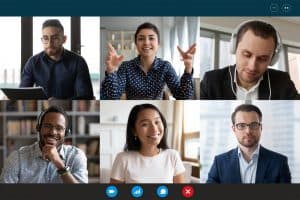Exploring the Unique Traditions of MIT
Nestled in Cambridge, Massachusetts, the Massachusetts Institute of Technology (MIT) is widely renowned for its academic prowess. However, this institution’s attraction transcends its educational inclination – it has a rich cultural landscape laden with traditions that have shaped its identity over time. Exploring the MIT traditions uncovers a world of creativity, humor, and intellect.
Understanding MIT’s Cultural Landscape
As an institution, MIT’s cultural landscape is perhaps as diverse as the courses it offers. Beginning as a small technical school in the 19th century, it has grown in size, reputation, and character. While academics continue to be the primary reason for its fame, the cultural elements complement it in a unique way, merging tradition and science in a splendid dance of idiosyncrasies.

MIT’s cultural landscape is a tapestry woven with threads of tradition, innovation, and resilience. It is a place where students, faculty, and alumni from all walks of life come together, united by a shared passion for knowledge and discovery.
The Role of Tradition in MIT’s Identity
The influence of tradition in shaping MIT’s distinct identity is evident in various forms. MIT traditions serve as the binding glue that unites students, faculty, and alumni from diverse backgrounds, creating a sense of camaraderie and offering a unique sense of belonging.
These traditions go beyond simply creating unity; they instill pride, stimulate creativity, and encapsulate the essence of the MIT spirit: innovation, resilience, and a hint of rebelliousness.
One of the most cherished traditions at MIT is the Brass Rat, the class ring that symbolizes the connection between past, present, and future generations of MIT students. This iconic piece of jewelry is not just a symbol of academic achievement but also a tangible reminder of the shared experiences and challenges that every MIT student faces.
The Evolution of MIT Traditions Over Time
While some MIT traditions stand as immovable as the institute’s foundational stones, others have evolved over time, adapting to cultural shifts and societal changes. These evolving traditions effectively mirror MIT’s commitment to innovation, while those that remain unchanged serve as symbols of an enduring legacy.
The result is a healthy blend of the old and the new, reinforcing the other, resulting in a vibrant cultural landscape that remains uniquely MIT.
One example of an evolving tradition is the MIT Hack, a playful and creative act of engineering mischief. Originally, hacks were harmless pranks carried out by students, such as placing a police car on top of the Great Dome or turning the campus into a giant Tetris game. Over time, hacks have become more elaborate and sophisticated, showcasing the ingenuity and technical prowess of MIT students.
As MIT continues to evolve and adapt to the ever-changing landscape of higher education, its traditions will undoubtedly continue to shape its cultural identity. Whether it’s the timeless rituals that have stood the test of time or the innovative traditions that emerge from the minds of MIT’s brilliant students, the cultural landscape of MIT will always be a testament to the institute’s unwavering commitment to excellence and exploration.
The Brass Rat: A Symbol of MIT Pride
This sense of MIT pride is particularly evident in the tradition of the Brass Rat. The Brass Rat, essentially the MIT class ring, is one of the school’s most recognized symbols. Presented during a ceremony known as the Ring Premiere, it is no ordinary piece of jewelry – it encapsulates memories, achievements, and the very essence of what it means to be part of MIT.
The History Behind the Brass Rat
The Brass Rat tradition was initiated in 1929 when the university first introduced these class rings. The decision to call the ring a “Brass Rat” lends an air of fun and informality to the tradition. The name was adopted because the beaver, MIT’s mascot and the ring’s prime emblem when viewed from a certain angle, can resemble a rat. Over time, the Brass Rat has become synonymous with MIT’s grit, industriousness, and determination.
As the years went by, the Brass Rat tradition grew stronger, with each graduating class eagerly awaiting the unveiling of their unique design. The anticipation and excitement surrounding the Ring Premiere ceremony became a cherished part of the MIT experience, as students eagerly gathered to witness the unveiling of the latest Brass Rat design. Last year, the Ring Premiere for the MIT Class of 2024 was held at MIT’s Kresge Auditorium on February 11th.
Throughout its history, the Brass Rat has witnessed countless stories of triumph and perseverance. It has been worn by brilliant minds who have gone on to make groundbreaking discoveries, invent revolutionary technologies, and shape the world in unimaginable ways. The Brass Rat is not just a piece of jewelry; it is a symbol of the incredible potential that lies within each MIT student.
The Significance of the Brass Rat Design
The design of the Brass Rat tells a tale in itself. Normally incorporating elements that represent significant events, shared experiences, or popular themes in the students’ time at MIT, every year’s design is unique, making each Brass Rat a cherished possession of a particular class.
The beaver emblem, a nod to nature’s engineer, is the only constant aspect across all designs, a symbolic representation of MIT’s engineering prowess.

Each element of the Brass Rat design holds a deeper meaning for the class it represents. From intricate engravings that depict memorable moments shared by the students to symbols that embody the spirit of MIT’s diverse academic disciplines, the design is a work of art that reflects the collective identity and achievements of the graduating class.
For example, in one particular year, the Brass Rat design featured a miniature replica of the iconic MIT Dome, symbolizing the students’ academic journey under the dome’s watchful gaze. Another year, the design incorporated gears and circuitry, representing the innovative spirit and technological advancements that define MIT.
As the years go by, the Brass Rat designs continue to evolve, reflecting the ever-changing landscape of MIT and the world. Each new design becomes a part of the university’s rich history, adding to the legacy of the Brass Rat and the pride it instills in every MIT student.
The Baker House Piano Drop: An Exercise in Creativity
The Baker House Piano Drop is another MIT tradition brimming with creativity, proving that even traditions at MIT are not immune to a touch of science!
Origins of the Baker House Piano Drop
The first Piano Drop took place in 197, masterminded by Charlie Bruno ’74. The concept originated during a Baker House meeting, where a lively discussion ensued regarding the fate of a broken piano that had occupied space within the residence.
Initially, someone proposed the idea of pushing it out of a window, but this notion was swiftly dismissed due to student handbook regulations that prohibited the act of throwing objects out of dorm windows.
However, a loophole was uncovered by Bruno; the handbooks did not explicitly forbid discarding items from dormitory roofs. Following a thorough examination of the handbooks, it became clear that Bruno’s observation was correct. Consequently, a motion was put forward, leading to the orchestration of a plan that culminated in the piano’s descent.
The event has since become an annual spectacle, a rite of passage for MIT students, and another example of the school’s peculiar charm.
The Baker House Piano Drop has been rescheduled to align perfectly with “Drop Day,” the last day students could drop classes without them appearing on their record.
In preparation for the event, student organizers collaborate on a safety plan in coordination with the Baker House manager, MIT’s Division of Student Life’s environment, health and safety manager, and representatives from MIT Facilities and MIT Grounds.
On Drop Day, Baker House residents with dorm rooms overlooking the drop area are instructed to keep windows and blinds closed, while a designated perimeter is set up for spectators. As the scheduled drop time approaches, students, MIT Police, Cambridge Police, and other community members gather at a grassy clearing by Memorial Drive to witness the piano’s descent.
The piano is often decorated by Baker House residents, filled with candy or confetti to enhance the celebratory atmosphere. Once the piano impacts the ground, students eagerly rush in from the sidelines to collect a few mementos from the demolished instrument.
It’s important to note that the pianos used in this event are nonfunctional, completely beyond repair, and are donated to the residence hall instead of being discarded in a junkyard.
The Science Behind the Piano Drop
At MIT, even an event as seemingly frivolous as a piano drop is transformed into a scientific endeavor. Every year, students from Baker House calculate variables like wind velocity, drop angle, and impact force, and predict where the piano will land. The piano drop, thus, is not merely symbolic relief from academic pressures, but a practical demonstration of the principles they learn in the classroom.
As the students meticulously analyze the data, they delve into the world of physics, applying their knowledge of projectile motion and Newton’s laws. They consider the effects of air resistance and gravitational acceleration, carefully plotting the trajectory of the piano as it plummets toward the ground. It’s a fascinating blend of theory and practice, showcasing the ingenuity and resourcefulness of MIT students.

But the science doesn’t stop there. MIT students take it a step further by incorporating technology into the piano drop. They attach sensors to the piano, allowing them to collect real-time data on its velocity, acceleration, and impact. This data is then analyzed and used to refine their calculations, ensuring greater accuracy and precision in predicting the piano’s landing spot.
Beyond the scientific aspect, the Baker House Piano Drop also fosters a sense of community and camaraderie among the students. It brings them together, not only as spectators but also as active participants in the event. They collaborate, brainstorming ideas and strategies to make the piano drop even more spectacular each year. The creativity and teamwork displayed during this process are a testament to the innovative spirit that permeates MIT.
So, as the tradition continues year after year, the Baker House Piano Drop remains a beloved and cherished event at MIT. It serves as a reminder that even in the world of academia, there is room for creativity and fun. It embodies the essence of MIT’s unique culture, where tradition and innovation coexist harmoniously, and where even the simplest of events can become a showcase of scientific curiosity and imagination.
The MIT Mystery Hunt: The Mind-Bending Quest
The MIT Mystery Hunt, an annual puzzlehunt competition that unfolds every January, is a remarkable and highly anticipated event that has left a profound mark on both the MIT community and the world of puzzle-solving enthusiasts.
History of the MIT Mystery Hunt: An Evolving Legacy of Enigma and Challenge
The MIT Mystery Hunt, an annual tradition since 1981, was first organized by Brad Schaefer, then an MIT PhD student. For the initial three years, Brad led the hunt until his departure in 1983. After that, the winning team of each hunt earned the privilege of crafting the next year’s challenge.
The hunt usually commences on the Friday before Martin Luther King Jr. Day, during MIT’s Independent Activity Period (IAP). Teams gather at Kresge Auditorium, where organizers reveal the year’s theme and distribute starting materials. Teams then disperse to tackle the initial set of online puzzles. Team composition varies, with some working remotely using email, phone, video conferencing, instant messaging, and team wikis.

Structure of the Mystery Hunt
In its earlier years, the hunt featured 30 to 40 puzzles, but recent editions have seen a surge in puzzle numbers, with some hunts having up to 200. Solving these puzzles takes around 48 hours, ultimately leading to the discovery of a hidden coin on the MIT campus. Teams regularly update organizers, verify puzzle answers, and seek clarifications during this intense period.
The winning team gains the privilege of organizing the following year’s hunt, with the ability to redefine many rules, ensuring fresh, creative challenges year after year.
This year, a remarkable 4,500 participants organized into 250 teams embarked on the quest to decipher the intricacies of the Mystery Hunt, a narrative woven through an astounding collection of 152 highly intricate puzzles. The challenge was meticulously crafted by the previous year’s winning team and typically incorporates a medley of puzzles, games, and an engaging scavenger hunt.
Due to the impact of the COVID-19 pandemic, the MIT Mystery Hunt has adapted to a hybrid format. Puzzles are now solved through a themed online platform, while the scavenger hunt and certain optional elements remain in person.
Hacks: MIT’s Tradition of Pranks and Ingenuity
MIT’s culture is notable not only for its strong commitment to purpose but also for its distinctive sense of humor, best exemplified through the practice of “hacking.” At MIT, hacks represent elaborate and harmless practical jokes, often carried out anonymously, whether on campus, within Cambridge, or occasionally in more distant locations. These stunts are renowned for their remarkable creativity, ingenuity, and the sheer challenge involved in executing them.
Defining a ‘Hack’ in the MIT Context
In the context of MIT, the term “hack” typically refers to a clever, good-natured, and “ethical” prank or practical joke. These endeavors present a unique blend of difficulty for the creators and amusement for the MIT community, and sometimes, they even captivate audiences worldwide. It’s essential to note that this concept has no association with computer or phone hacking, which MIT refers to as “cracking.”
From placing a police car on the Great Dome to transforming the same structure into R2D2, MIT hacks have a long history of brightening up the monotony of campus life.
Notable Hacks in MIT History
The Great Dome, a prominent feature of MIT’s Building 10, has served as a canvas for a multitude of pranks over the years, with one of the most renowned being the placement of a replica MIT police car atop it in 1994. Situated prominently along the Charles River, the dome’s size and visibility have consistently made it a tempting location for audacious hackers, and its symbolic importance on the MIT campus has rendered it a sought-after site for ambitious exploits.

Over the course of several decades, the Great Dome has played host to an array of captivating hacks, from the creation of a counterfeit MBTA car to the meticulous transformation of its appearance into that of R2-D2 from the “Star Wars” franchise.
In 1999, as a celebratory gesture coinciding with the release of “Star Wars: Episode I,” hackers ingeniously turned the Great Dome into a striking representation of R2-D2, leaving a memorable impression of creativity and innovation on the MIT campus
Perhaps one of the most widely celebrated hacks in recent history is the time when MIT students ingeniously transformed the campus-facing side of the Green Building into a massive game of Tetris in 2012, complete with a playable joystick. This interactive spectacle not only dazzled onlookers but also epitomized the harmonious blend of technology, humor, and ingenuity that characterizes MIT’s hacking culture.
These notable hacks are more than just amusing pranks; they are a testament to the vibrant, creative, and innovative atmosphere that thrives at MIT, a testament that continues to captivate and inspire those who encounter the extraordinary world of MIT hacks.
The MIT traditions are the lifeblood of an institution defined by innovation, creativity, and a strong sense of community. These traditions, from iconic hacks to the annual Mystery Hunt, celebrate MIT’s unique spirit and exemplify the coexistence of tradition and innovation. They are not relics of the past but living expressions of the enduring values that shape the Massachusetts Institute of Technology.





































